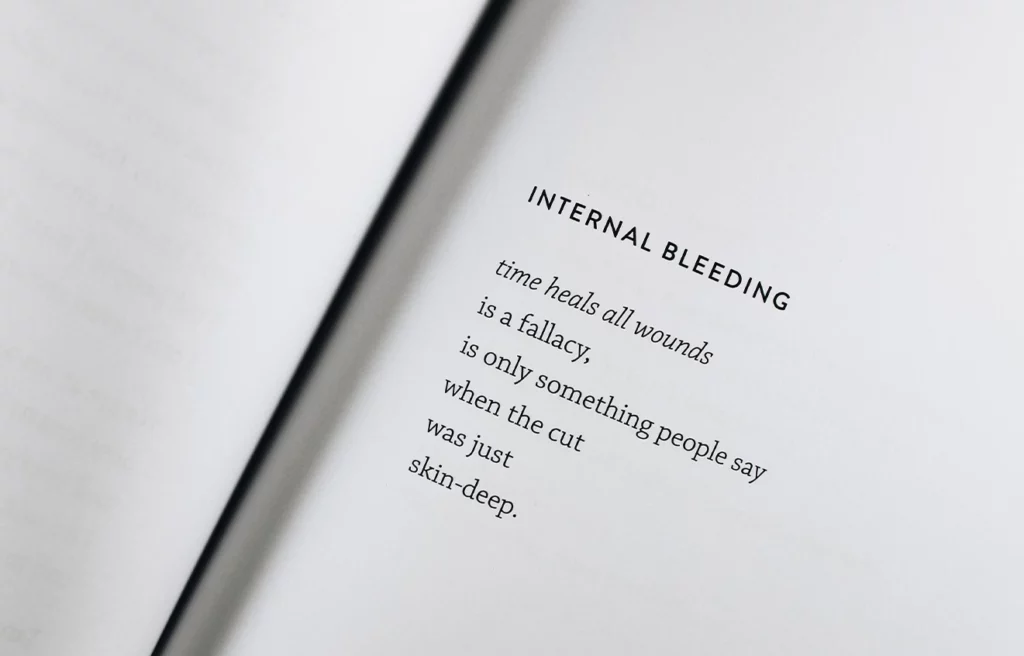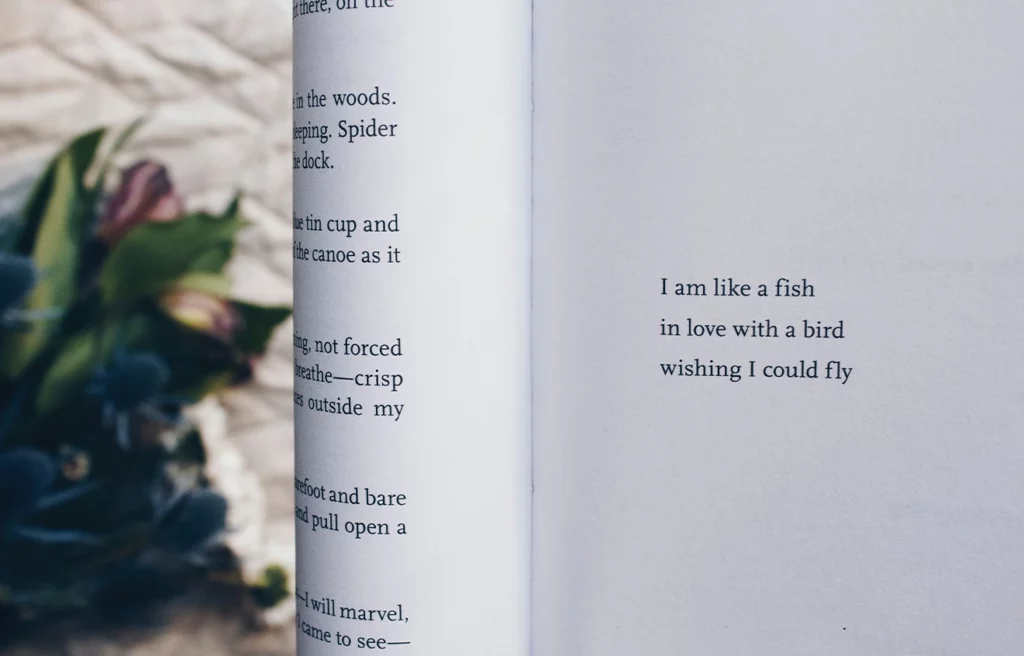Have you ever wondered whether you should italicize poems or not? It’s a debate that has been going on for years among writers, editors, and publishers. Some argue that italics are necessary to differentiate poems from the rest of the text, while others believe that they are unnecessary and even distracting.
In this guide, we’ll explore the pros and cons of italicizing poetry and provide you with basic guidelines and tips for formatting poetry like a pro.
As a writer, you know that formatting is an essential part of the writing process. It can make or break the readability and flow of your text. And when it comes to poetry, formatting is even more critical. Poetry is a unique form of writing that requires careful attention to line breaks, stanza breaks, and other formatting elements that can affect the meaning and impact of the poem.
That’s why it’s essential to understand the debate over italicizing poetry and to know when and why to do it or avoid it. With this guide, you’ll be able to format your poems like a pro and make them stand out from the rest of your text.
Key Takeaways
- Formatting in poetry is crucial and includes considerations such as line breaks, stanzas, capitalization, and punctuation.
- Italics can be a personal preference for poets, but consistency is key if they choose to use them.
- Quoting poetry correctly is important for readability and formatting.
- While highlighting important words and titles can be a powerful tool, overuse of italics can be distracting and unprofessional.
Understanding the Debate Over Italicizing Poetry
You might be wondering why there’s a debate over italicizing poetry, but it’s because some argue that italics interfere with the flow and rhythm of the poem.
This is because italics can make certain words stand out too much, drawing attention away from the overall message and disrupting the natural cadence of the text. Some poets feel that this disrupts the traditional conventions of poetry and makes it more difficult for readers to fully appreciate the art form.
On the other hand, proponents of italicizing poetry argue that it can help readers distinguish between regular prose and poetry. They believe that italics can emphasize the unique structure and form of the poem, making it easier for readers to understand and appreciate the artistry of the work.
Ultimately, the decision to italicize poetry is a personal one and depends on the individual poet’s style and preferences. Regardless of whether or not a poet chooses to use italics, the most important thing is to stay true to their artistic vision and create work that resonates with readers.
Basic Guidelines for Formatting Poetry
When formatting poetry, there are a few key guidelines to keep in mind. First, line breaks and stanzas should be carefully considered to enhance the meaning and flow of the poem.
Second, capitalization and punctuation should be used intentionally to convey the desired tone and emphasis.
Lastly, when quoting other sources within a poem or using indentation, it’s important to follow established conventions to maintain clarity and consistency.
Keep these guidelines in mind to effectively format your poetry and convey your intended message.
Line Breaks and Stanzas
As you read through your poem, it’s important to pay attention to the line breaks and stanzas, as they can greatly impact the overall rhythm and tone of the piece.
Line breaks are essential because they dictate the pace and flow of the poem. They can create suspense, emphasize certain words or phrases, or even change the meaning of a sentence. It’s important to make deliberate choices with your line breaks in order to achieve the desired effect.

Similarly, stanza length can also affect the tone and pacing of the poem. Longer stanzas can create a feeling of continuity and fluidity, while shorter stanzas can create a sense of fragmentation or choppiness. It’s important to consider the content of each stanza when deciding on its length.
A stanza with a lot of emotional weight may benefit from a shorter length, while a stanza that is more descriptive or narrative in nature may require a longer length to fully develop the scene or character.
Ultimately, the line breaks and stanza length should work together to create a cohesive and impactful poem.
Capitalization and Punctuation
Proper capitalization and punctuation can enhance the readability and clarity of your written work, giving it a more polished and professional appearance. Here are some capitalization rules and common mistakes in punctuation that you should keep in mind when formatting your poetry:
- Capitalize the first word of each line in your poem, even if it’s not the first word of a sentence.
- Capitalize proper nouns, such as names of people, places, and organizations.
- Use punctuation marks, such as commas, periods, and semicolons, to clarify the meaning of your poem and to guide the reader’s interpretation. However, be careful not to overuse punctuation marks, as this can disrupt the flow and rhythm of your poem.
It’s important to follow these rules to ensure that your poetry is easy to read and understand. By using proper capitalization and punctuation, you can convey your message with clarity and elegance, and you can establish yourself as a talented and professional writer.
Quotations and Indentation
Don’t forget to use quotation marks and indentation to make your poetry stand out and evoke a powerful emotional response from your readers. Quoting poetry is essential for formatting it correctly and making it easy to read.
When you quote a line of poetry, use quotation marks to indicate the beginning and end of the line. If you’re quoting multiple lines, use double quotation marks to indicate the beginning and end of each line.
Indentation styles also play a crucial role in formatting poetry. There are various indentation styles to choose from, such as block indentation or hanging indentation. Block indentation involves starting each line of poetry at the same margin, while hanging indentation involves indenting all lines except the first.
Choose the indentation style that best fits the tone and structure of your poem. By using proper quotation marks and indentation, you can showcase your poetry in the best possible light and captivate your readers with your words.
Italicizing Poetry: When and Why to Do It
When it comes to italicizing poetry, there are a couple of key points to keep in mind. First, you might want to consider emphasizing the titles of your poems by italicizing them.
Additionally, you may want to italicize certain words within your poems to add emphasis or convey a particular tone. It’s important to be consistent with your use of italics throughout your work and make sure that any other italicized text is used correctly.

Emphasizing Titles and Individual Words
Highlighting important words and titles in poetry can be a powerful tool for poets to convey their message. By italicizing or underlining certain words or phrases, poets can draw the reader’s attention to specific parts of their poem and add emphasis to their meaning.
Proper nouns, such as names of people or places, are often italicized in poetry to signify their importance. For example, in T.S. Eliot’s ‘The Love Song of J. Alfred Prufrock,’ the name ‘Mermaids’ is italicized to draw attention to the mythical creatures and add to the overall dreamlike atmosphere of the poem.
Additionally, poets may use bold or all caps to create a visual impact on the reader. By using these formatting techniques, poets can create a more immersive experience for their audience, bringing their words to life in the reader’s mind.
Emphasizing words and titles in poetry is a crucial aspect of the art form. By using italicization, bold, or all caps, poets can add emphasis to their work and create a more impactful reading experience.
Proper nouns are often italicized to signify their importance, drawing attention to specific parts of the poem and adding to its overall meaning. As a poet, it’s important to consider the impact of formatting when crafting your work and to use it as a tool to enhance your message.
Consistency with Other Italics in Your Work
Consistency is key; it’s important to ensure that the italics used in your poetry are in line with those used throughout your body of work to maintain a sense of cohesion and professionalism.
Maintaining uniformity not only makes your work look aesthetically pleasing, but it also helps readers focus on the content rather than being distracted by inconsistent formatting.
When it comes to formatting poetry, it’s easy to get carried away with using italics to emphasize certain words or phrases. However, it’s important to be mindful of the italics used in the rest of your work.
For example, if you use italics in your prose to indicate thoughts or dialogue, it may be confusing for readers to see italics used in your poetry for a different purpose.
Consistency in italics usage helps your work appear polished and professional, ultimately enhancing the overall reading experience for your audience.
Not Italicizing Poetry: When and Why to Avoid It
If you want your poetry to stand out and be easily recognized, avoid italicizing it. While it may seem like a good idea to set your poetry apart from the rest of your text, too much emphasis can actually be distracting and take away from the creative expression of your work.
Here are a few reasons why you may want to avoid italicizing your poetry:
- It can be difficult to read. Italicized text can be harder on the eyes, making it more difficult to read your poetry. This can be especially true if your poem is longer or more complex.
- It can detract from the meaning. If you use italics too much, it can become a distraction and detract from the meaning of your words. This can be especially true if you use italics to add emphasis to words that already have significance in your poem.
- It can look amateurish. While italicizing poetry may seem like a good idea, it can actually make your work look amateurish. This is because italics can be overused or used incorrectly, which can make your work look sloppy or unprofessional.

Tips and Tricks for Formatting Poetry Like a Pro
To make your poetry look professional and polished, you’ll want to pay attention to the spacing and line breaks in your writing.
One of the most important poetry formatting tools is the use of creative typography for poems. This can include bolding or italicizing certain words or phrases to draw attention to them, or using different font sizes to create visual interest.
Another tip for formatting poetry is to pay attention to the line breaks. In poetry, line breaks can be just as important as the words themselves. Consider breaking lines at natural pauses or emphasizing certain words by giving them their own line. Don’t be afraid to experiment with different line breaks to see what works best for your poem.
By using these poetry formatting tools and being intentional with your line breaks, you can create a visually stunning and impactful poem that will leave a lasting impression on your readers.
Conclusion
Whether you choose to italicize your poems or not, always remember to follow basic guidelines such as using line breaks and indentation.
Italicizing can be a great way to help your readers distinguish between regular text and poetry, but it’s not always necessary. Ultimately, the decision is up to you as the writer.
Think of formatting poetry like dressing up for a special occasion. Just as you might choose a fancy dress or suit to impress your audience, formatting your poetry can add an extra touch of elegance and professionalism.
So go ahead and experiment with different styles and techniques until you find the perfect fit for your writing.
